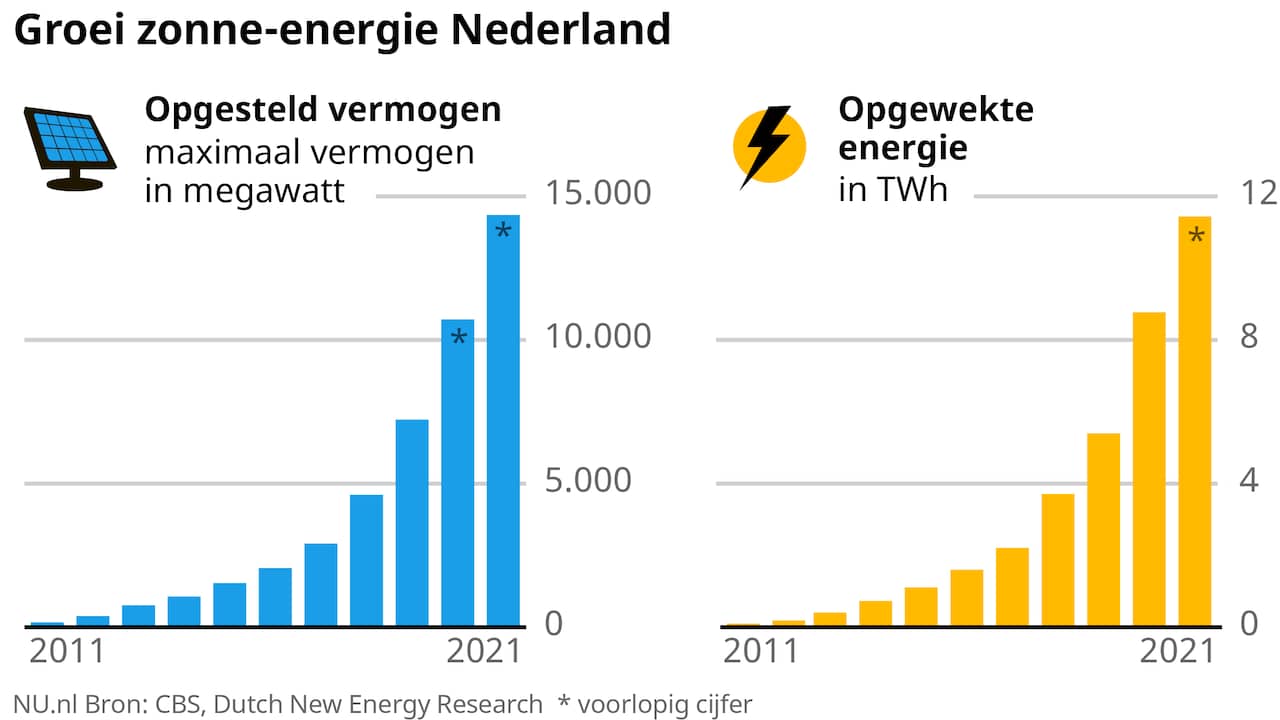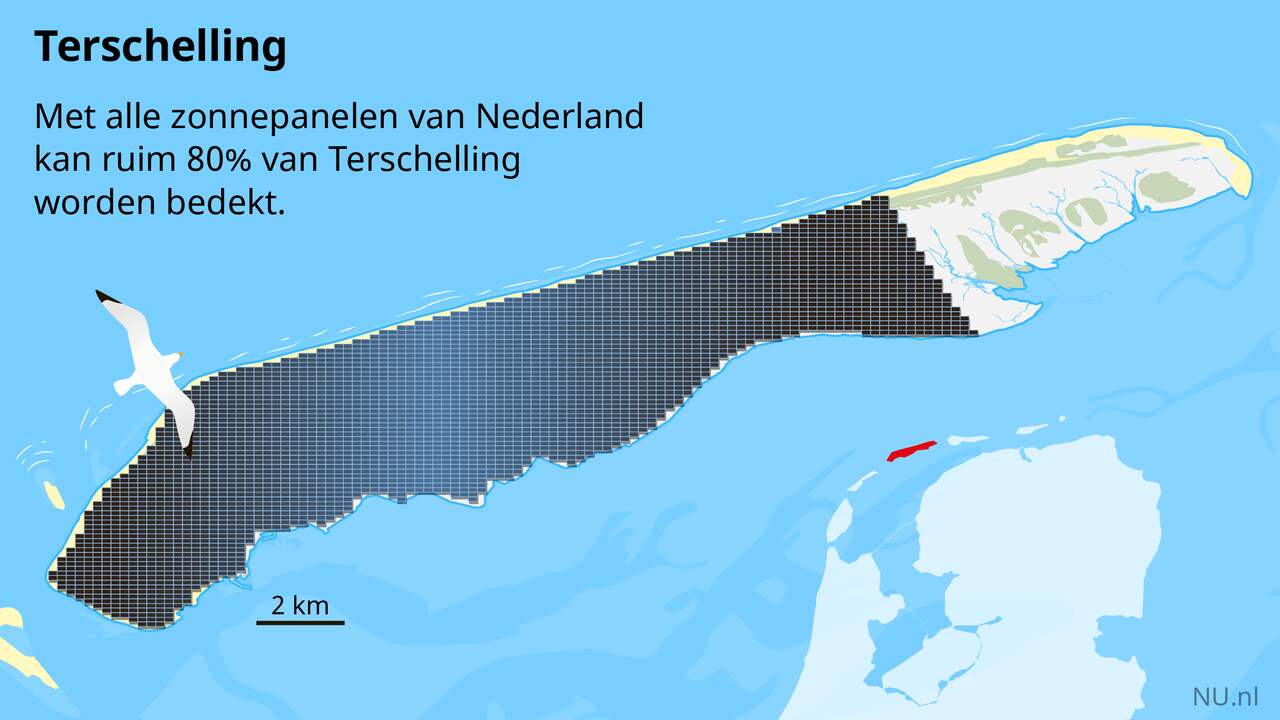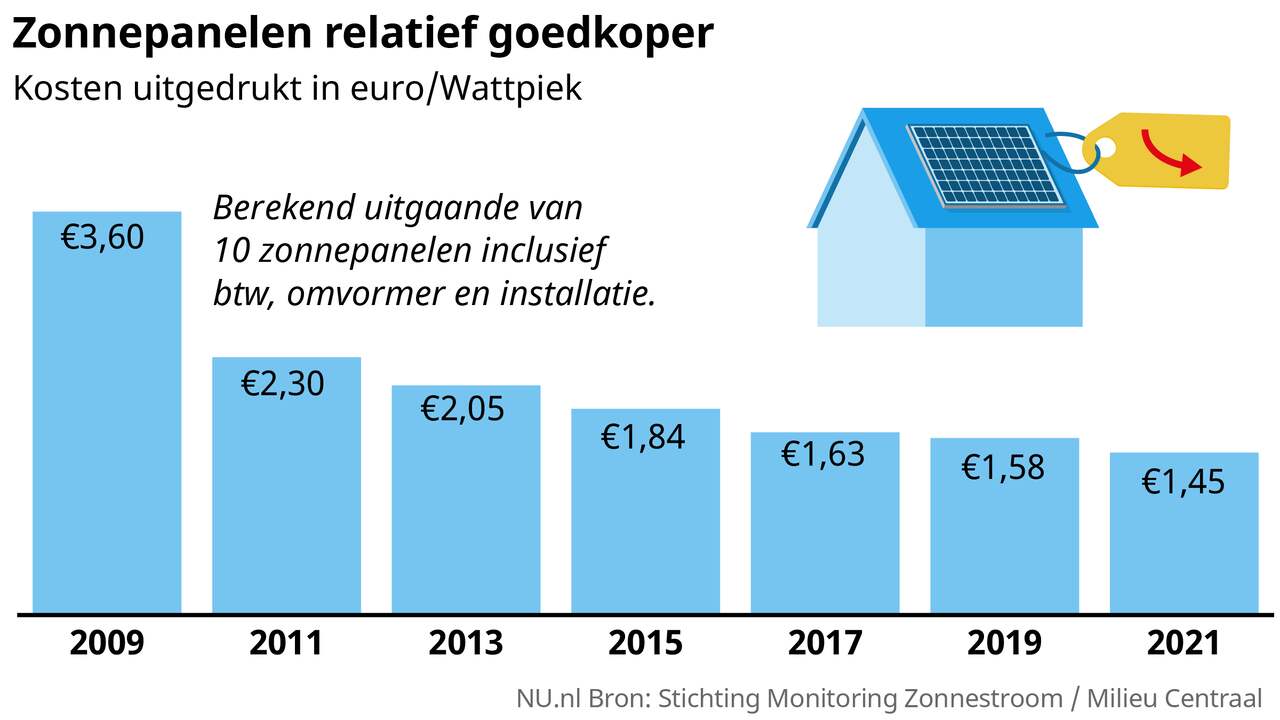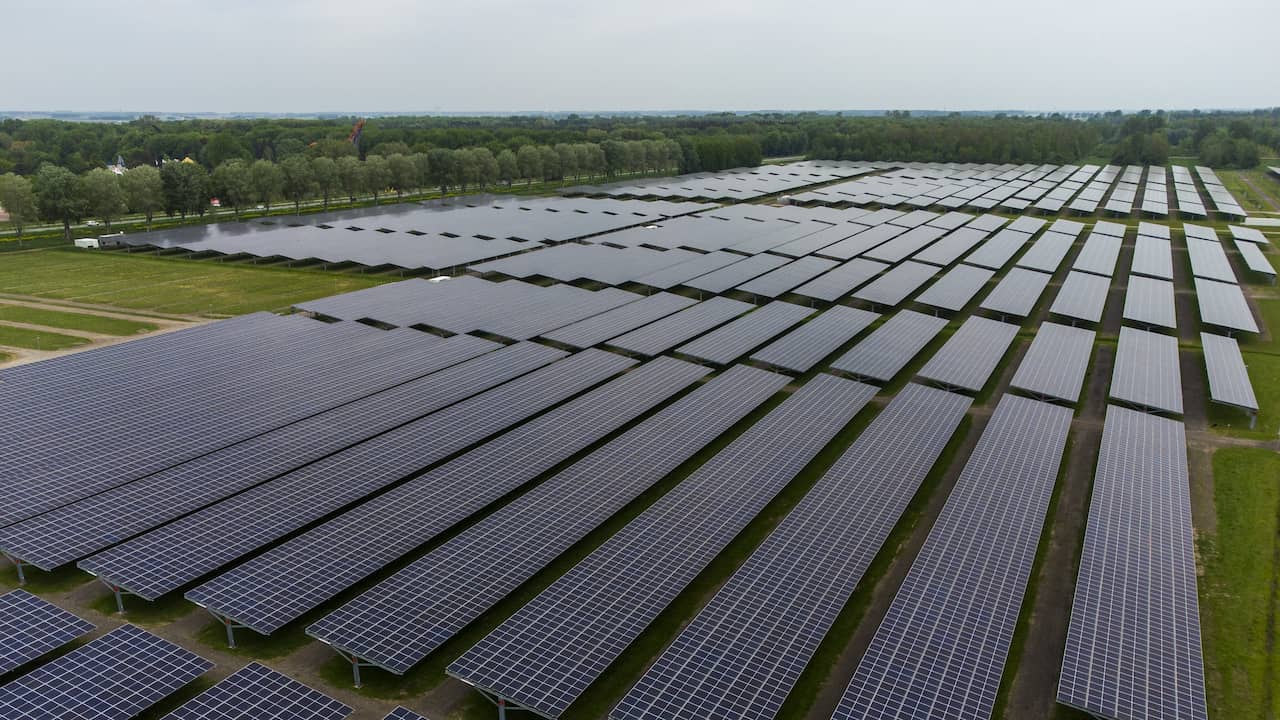Ten years ago there were hardly any solar panels on roofs and in meadows, now things are different. Last year, the Netherlands obtained almost 10 percent of all electricity from the sun’s rays. These four graphs show the rapid growth of solar energy in our country.
In 2011, there were about 170 megawatts of solar panels throughout the Netherlands, which together produced enough electricity for just under 40,000 households. Last year a solar park was opened in Drenthe that produces almost as much power on its own: 120 megawatts.
There are now more than 14,000 megawatts of solar panels throughout the Netherlands. One and a half million houses generate solar energy on the roof, but there are also more and more panels in meadows, on company roofs and even on the water.

–
–
–
Almost one Terschelling of solar panels
The Netherlands has an estimated 44 million solar panels. We assume an average power of 330 Watt peak, an estimate by the trade association Holland Solar.
If you laid all those millions of panels next to each other flat on the ground, you could fill an area of more than 70 square kilometers. That is almost as big as the island of Terschelling.


–
–
–
The Netherlands is (almost) a frontrunner
Solar energy is growing much faster in the Netherlands than in other countries. Only Australia has more solar capacity per inhabitant. In Europe, the Netherlands leads the way, followed by Germany, Belgium and Luxembourg.
This is striking, because because the Netherlands is located so north, solar panels produce relatively little power here. The same panel produces much more electricity in Spain or Australia, because those countries are closer to the equator and therefore receive more bright sun. In addition, it is less often cloudy.


–
–
–
Panels continue to fall in price
The generation of solar energy has been able to grow so strongly because the price of solar panels has fallen enormously. Including installation and inverter, the price of a set of solar panels has fallen almost 40 percent in ten years. For large solar parks, the price difference is even greater, while these are generously supported by subsidies.


–
–
–
Electricity grid must be strengthened
In 2020, the International Energy Agency officially named solar energy the “cheapest electricity in history”. But to be able to use even more solar power, substantial investments will have to be made in the electricity grid in the Netherlands, which is overloaded in some places.
Over the next ten years, grid operators will invest tens of billions of euros in upgrading the grid, but are also calling for energy storage in, for example, batteries. This means that the large amount of solar energy that is generated in the middle of the day can also be used later.
–


